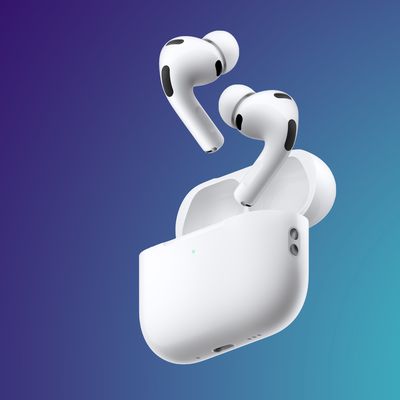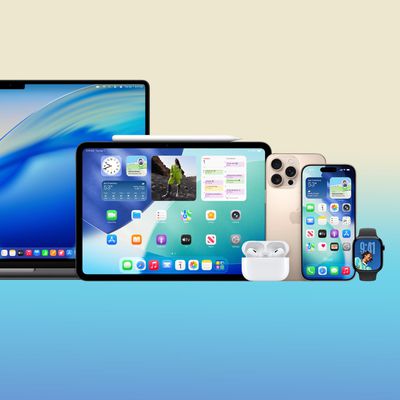WiFi Performance to Improve As FCC Opens Unlicensed Frequencies
 In February, the Wall Street Journal reported on the formation of a new lobbying group called WifiForward that advocated the opening up of unlicensed frequencies to alleviate Wi-Fi congestion and improve performance. The group consisted of industry partners including Google, Best Buy, Microsoft, and many others.
In February, the Wall Street Journal reported on the formation of a new lobbying group called WifiForward that advocated the opening up of unlicensed frequencies to alleviate Wi-Fi congestion and improve performance. The group consisted of industry partners including Google, Best Buy, Microsoft, and many others.
On Monday, the FCC announced that it was freeing up more airwaves for Wi-Fi usage in the U.S. The WiFiForward group wrote in response to the ruling:
Today, the FCC voted unanimously to unleash more unlicensed spectrum will support all the things we already use and further drive investment and experimentation—a 50% increase in spectrum available for Wi-Fi, to be exact. Consumer devices are already equipped to operate in the band, so they can easily be adapted to quickly take advantage of new 5 GHz channels. And a new Wi-Fi standard, 802.11ac, has just been approved for the 5 GHz band. 802.11ac’s wide channels will allow for a better consumer experience.
The group indicates that consumer devices will be "easily" adapted to take advantage of the new 5GHz channels, and that 802.11ac will be able to take advantage of the new bandwidth.
802.11ac or "Gigabit" Wi-Fi offers speeds up to three times as fast as existing 802.11n wireless networks. 802.11ac has been introduced into Apple's Mac line starting in 2013, and is expected to be included in the iPhone 6 later this year.
Popular Stories
You'd think things would be slowing down heading into the holidays, but this week saw a whirlwind of Apple leaks and rumors while Apple started its next cycle of betas following last week's release of iOS 26.2 and related updates.
This week also saw the release of a new Apple Music integration with ChatGPT, so read on below for all the details on this week's biggest stories!
Top Stories
i...
Next year's iPhone 18 Pro and iPhone 18 Pro Max will be equipped with under-screen Face ID, and the front camera will be moved to the top-left corner of the screen, according to a new report from The Information's Wayne Ma and Qianer Liu.
As a result of these changes, the report said the iPhone 18 Pro models will not have a pill-shaped Dynamic Island cutout at the top of the screen....
Since the beginning of December, Apple has been pushing iPhone users who opted to stay on iOS 18 to install iOS 26 instead. Apple started by making the iOS 18 upgrades less visible, and has now transitioned to making new iOS 18 updates unavailable on any device capable of running iOS 26.
If you have an iPhone 11 or later, Apple is no longer offering new versions of iOS 18, even though there...
Since the AirPods Pro 3 launched, there have been complaints from users who have noticed a static-like sound or a crackling issue when using the earbuds, particularly when Active Noise Cancellation is on but no media is playing. Users have also run into strange high-pitched whistling sounds that happen intermittently.
We shared the issues back in late October, and despite two subsequent...
There's now a dedicated Apple Music app for ChatGPT, which allows ChatGPT to make music recommendations and build playlists.
Apple Music can be added to ChatGPT through the Settings section in the Mac app, website, or iOS app. Apple Music is listed under the apps option, and connecting to it requires signing in with your Apple Account for authorization purposes.
ChatGPT can be used to...
Samsung has officially unveiled the Exynos 2600, the world's first 2 nanometer mobile system-on-a-chip (SoC), built on the company's Gate-All-Around (GAA) process. The 10-core ARM-based design aims to deliver improved performance and efficiency for flagship devices like the upcoming Galaxy S26 series.
The chip uses Arm's latest cores and supports new instructions for improved CPU speed and...
There has been a whirlwind of rumors over the last few days, sourced from leaked internal software designed for the iPhone and the Mac, and news sites like The Information. Below, we have a quick recap of everything we've heard this week, which serves as a guide to Apple's product plans in 2026 and beyond.
We've organized the info by likely release date, though there are some products that...
Apple Maps no longer offers a Flyover feature that provides users with automated tours of notable landmarks in major cities. The Flyover option appears to have been nixed around when iOS 26 launched, but its removal went largely unnoticed.
Flyover city tours were introduced in 2014 with iOS 8 and OS X Yosemite, using Flyover imagery to generate an aerial tour. Most cities with Flyover...
![]() In February, the Wall Street Journal reported on the formation of a new lobbying group called WifiForward that advocated the opening up of unlicensed frequencies to alleviate Wi-Fi congestion and improve performance. The group consisted of industry partners including Google, Best Buy, Microsoft, and many others.
In February, the Wall Street Journal reported on the formation of a new lobbying group called WifiForward that advocated the opening up of unlicensed frequencies to alleviate Wi-Fi congestion and improve performance. The group consisted of industry partners including Google, Best Buy, Microsoft, and many others. 




















